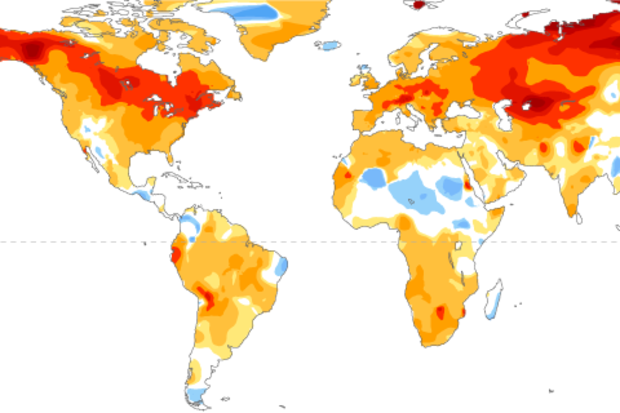Blogs
The data are in, and it’s official: March was warm. And parts of the country were dry. And parts were really wet. And you can read all about it in the monthly State of the Climate report.
Let’s go Beyond the Data for March, and hit on a few more complex items embedded within the basic statistics.
Unprecedented widespread warmth
If you were alive during March 2016, and I’m betting you were, you witnessed U.S. history.
One stunning feature from the March 2016 temperature map was just how universally warm the month was. Every one of the 357 climate divisions across the contiguous United States and Alaska ended up - at least - in the “warmer than normal” category. That’s harder than …
Read article
This is a guest post by Dr. Amy Solomon and Dr. Gil Compo of the NOAA Earth System Research Laboratory and the Cooperative Institute for Research in Environmental Sciences of the University of Colorado-Boulder. Both scientists sit within the Physical Sciences Division, which took on a leading role in the El Niño Rapid Response Campaign. They excel at improving our process-based understanding of the models and developing reanalysis datasets, which are critical to understanding and predicting weather and climate.
The ongoing El Niño of 2015-2016 is a historically strong event, the likes of which is only seen once or twice during a scientific career. Not wanting to let this opportunity pass…
Read article
Is El Niño the Marcia Brady of climate variability? No doubt that El Niño is the sexiest, most popular, and most studied aspect of climate variability. And we do continue to talk about El Niño events decades after they seem relevant, much like Marcia.
Now that the U.S. has just finished its warmest winter on record, we naturally ask ourselves just how influential the strong El Niño was. But how did other factors in the earth’s climate system contribute to the record-breaking season? How did Greg and Bobby and Cindy—or even Jan—influence the hit TV show from yesteryear? Was the success of the show solely due to Marcia, and was our warmest winter on record solely a result …
Read article
The strong El Niño of 2015/16 is on the decline, and the CPC/IRI forecast says it’s likely that conditions will transition to neutral by early summer, with about a 50% chance of La Niña by the fall. In this post, we’ll take a look back at this past winter and forward to what may happen next.
Current events
El Niño has begun to weaken, with sea surface temperature anomalies across most of the equatorial Pacific decreasing over the past month. The large amount of warmer-than-average waters below the surface of the tropical Pacific (the “heat content”) also decreased sharply, despite getting a small boost in January. The heat content is the lowest it’s been in over a year, and since the s…
Read article
* { margin: 0; padding: 0; }
#page-wrap { width: 620px; margin-bottom: 430px; position: relative; }
a { text-decoration: none; color: black; }
.image-link { display: block; width: 620px; height: 376px; position: absolute; top: -270; left: 0px; }
#one { background: url(http://www.climate.gov/sites/default/files/BD_LongestStreakRecordWarm_Aitoff_1998_620.png) no-repeat; z-index: 2; }
#two { background: url(http://www.climate.gov/sites/default/files/BD_LongestStreakRecordWarm_Aitoff_1944_620.png) no-repeat; z-index: 1; }
#one a {http://www.climate.gov/sites/default/files/QuinaultVisualizationRelocation_620.png}
#one span { position: absolute; left: 0; bottom: -35px; text-align:center; …
Read article




